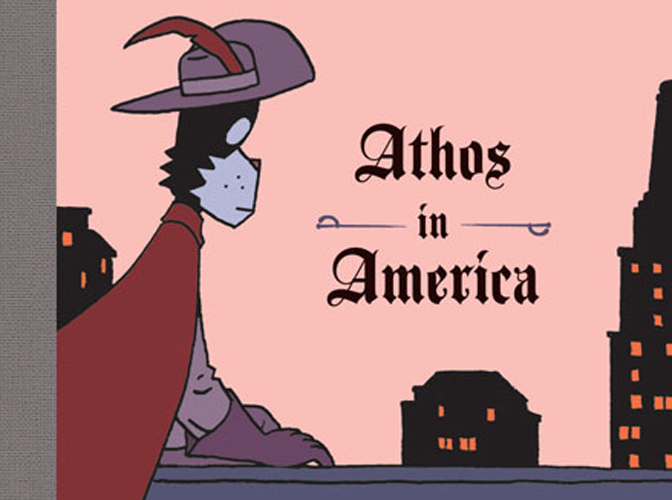The graphic novelist John Arne Sæterøy is more widely known by his simple pseudonym Jason. Born in Molde, Norway in 1965, Jason has become an internationally acclaimed author and illustrator for his graphic novels. He has won myriad prestigious comic book awards both in his home country and abroad. In the U.S. alone he has won two Eisner Awards for Best U.S. Edition of International Material, a Harvey Award for Best New Talent back in 2002 and an Inkpot Award in that same year. His next graphic novel, Lost Cat, is set to be released on June 19.
A work of Jason’s is immediately identifiable because of his strong style. His illustrations are almost minimalist, but powerful in their simplicity. His sparse drawings combined with a ligne claire style (in which all lines are uniform in size and pressure, therefore not providing a focus on any one element in a panel) are reminiscent of the famous Belgian cartoonist Hergé, author of the famous Tintin series.
Jason’s illustrations are almost minimalist, but powerful in their simplicity
Even more endemic to Jason’s style are his characters, all of which are anthropomorphic animals. Upright and clothed cats, dogs and birds are the main characters in his graphic novels. These characters are all tall and lean, their designs dominated by vertical lines. They also share pupil-less, white circles for eyes. The first impression of these gaping whites is both haunting and disturbing, but Jason still manages to showcase a wide range of emotions with them.
Jason’s graphic novels tend to be shorter; perhaps it is more apt to term them graphic novellas. The content is anything but small, however. His ideas fight the notion that there are no original stories anymore, and he enjoys combining disparate elements, as in the case of his combination of The Three Musketeers and Flash Gordon in a graphic novella entitled “The Last Musketeer.”
Other notable works include Left Bank Gang, in which writers of the Lost Generation such as Ernest Hemingway, F. Scott Fitzgerald, Gertrude Stein and James Joyce are re-imagined as cartoonists in 1920s Paris. Then they decide to rob a bank. This novel, along with I Killed Adolf Hitler, a time travel assassination that is precisely what it sounds like, are the two which earned Jason Eisner awards, the highest comic book industry award in the U.S. Based off these premises alone, Jason’s inclination for dry humor and broad imagination is readily apparent.
His last work to be released, in March of 2012, was Athos in America, a 200-page graphic novel collecting six different stories including the eponymous tale. That tale is a prequel to one of his other stories, “The Last Musketeer.” Other tales in the book include “A Cat from Heaven,” a meta story in which Jason draws a graphic novel, has a reading in a store and gets drunk. Athos in America is the latest in a long line of books in Jason’s career wherein he releases a graphic novel compilation that collects a variety of shorter stories together. This is set to change with Lost Cat.
The author is endowed with a pension for fantastic plots
Lost Cat is to be Jason’s first full-length graphic novel: a single story lasting longer than fifty pages. In this detective yarn, the protagonist begins the book by locating the titular missing pet after seeing a lost pet sign. Upon returning it to the owner, the detective makes a connection with the woman as they chat, and he asks her out. When she disappears before their date, the mystery begins. He starts to accept other cases, but in the back of his mind he never gives up on finding her. Enhanced by Jason’s taut, sparse style, Lost Cat looks to be a somber meditation on the connections people make with each other, and what happens when that connection is severed.
Jason is endowed with a pension for fantastic plots (when one of his characters asks how he is supposed to kill the man in a photo he is holding, his employer deadpans, “With a time machine.”) and expressive characters. His style harkens to European comic masters such as Hergé, and he is adept at displaying a range of moods. He can simultaneously show humor in a situation and existentialism upon the faces of his protagonists without any disconnect.
Part of this stems from the European comic vogue of cartooning and not worrying about realistic styles. This allows European comic authors, such as Jason, to be creative with plots and setting stories in exotic locales while bestowing an underlying heart to the stories thanks to the exaggerated expressions cartoon faces provide. The Norwegian graphic novelist Jason is a master of this cultural style, taking his anthropomorphic protagonists as far as the moon while keeping the readers’ feet on emotional, human ground.
